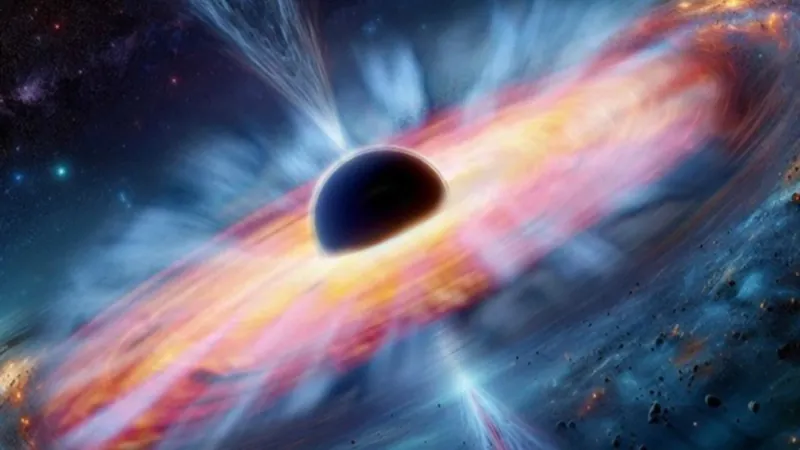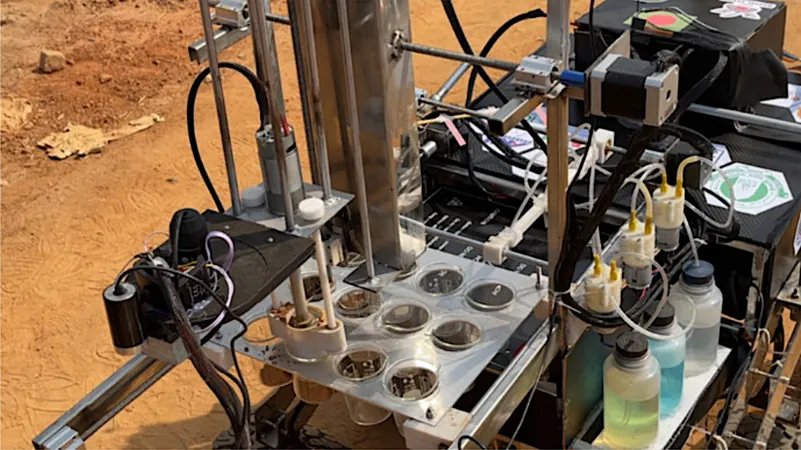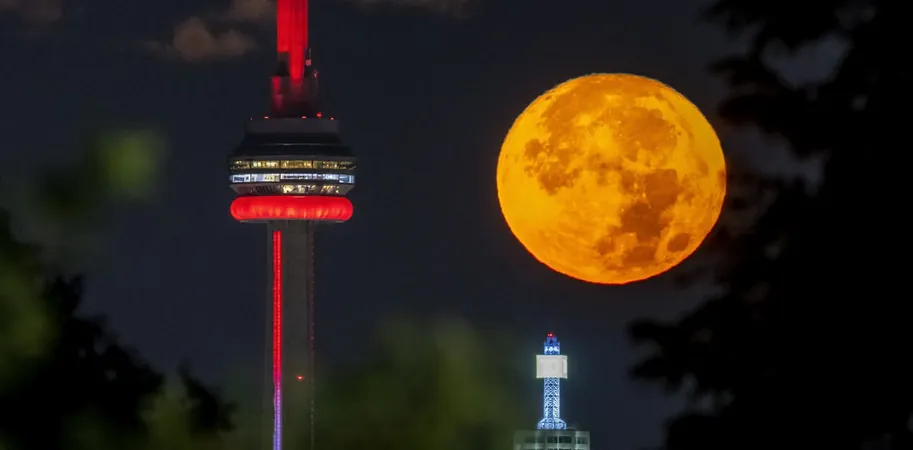
How Supermassive Black Holes Defy Physics: New Discoveries Rewrite Cosmic History!
2024-11-20
Author: Olivia
Introduction
In an astonishing revelation, scientists have uncovered evidence suggesting that black holes which emerged less than 1 billion years after the Big Bang might have broken the fundamental laws of physics, allowing them to grow to colossal sizes in remarkably short timeframes. This breakthrough could finally unravel the enigma of how some supermassive black holes in the infant universe reached such immense mass so rapidly.
Understanding Supermassive Black Holes
Supermassive black holes, whose masses can range from millions to billions of times that of our Sun, are located at the centers of vast galaxies. Their growth has traditionally been attributed to a series of mergers with other black holes and by consuming surrounding matter—an act referred to as accretion. This feeding frenzy causes surrounding material, organized into thin, glowing disks, to radiate intensely, forming bright celestial objects known as quasars. Some quasars can outshine entire galaxies, becoming visible across the vastness of space.
The Cosmic Riddle
However, according to prevailing models, the processes needed for black holes to achieve supermassive status typically unfold over billions of years. This raises a significant question; how can we observe quasars powered by supermassive black holes a mere 500 million years post-Big Bang, as the James Webb Space Telescope (JWST) has evidenced?
Research Methodology
To shed light on this cosmic riddle, a dedicated team of researchers employed the XMM-Newton and Chandra space telescopes to analyze 21 of the earliest known quasars emitting X-ray light. Their research indicated that these supermassive black holes, which likely formed during an early epoch of universal expansion termed the 'cosmic dawn,' may have experienced rapid growth through intense feeding bursts.
Significance and Implications
Alessia Tortosa, a leading researcher from the Italian National Institute for Astrophysics (INAF), emphasized the significance of these findings, stating, 'Our work suggests that the supermassive black holes at the centers of the first quasars may have increased their mass dramatically, defying the limits of physics.'
The Eddington Limit
This rapid growth poses a challenge to the Eddington limit, a fundamental principle stating that there is a maximum luminosity any accreting body can achieve before radiation pressure overcomes gravitational forces, effectively halting the growth process. In simpler terms, a voracious black hole should produce so much light that it would impede its own ability to suck in more material, stalling its expansion.
Super-Eddington Accretion Proposal
The team’s findings indicate that supermassive black holes may experience a phase of 'super-Eddington accretion,' bypassing the constraints imposed by this limit. They discovered a correlation between the X-ray spectrum emitted by these quasars and the supersonic winds of matter expelled from them—winds that can reach thousands of miles per second. Notably, quasars exhibiting low-energy X-ray emissions displayed faster winds, while those with high-energy emissions had slower winds. This suggests different accretion mechanisms, potentially supporting the existence of a super-Eddington growth phase.
Temperature of Surrounding Gas
Studying the gas's temperature surrounding these black holes is crucial as it relates to how the black holes could consume matter. The connection drawn between X-ray emissions and quasar winds may clarify how these supermassive black holes formed in such a short cosmic timeframe—an answer to one of the biggest puzzles in modern astrophysics!
Research Outcomes
The research employed data collected from XMM-Newton between 2021 and 2023, as part of the Multi-Year XMM-Newton Heritage Programme. Luca Zappacosta, another INAF researcher, highlighted the project’s objective to target the most massive quasars of the early universe, noting, 'The results we've documented have been truly unexpected, indicating a super-Eddington-type growth mechanism for black holes.'
Conclusion
'I would say we hit the jackpot!' Zappacosta proclaimed, reflecting the groundbreaking nature of these discoveries. As we stand on the brink of new astronomical knowledge, these findings not only challenge our understanding of black holes and their formation but may also redefine our perception of the cosmos itself. What other secrets lie hidden in the depths of space, waiting to be unearthed? Stay tuned as astronomy takes us on an exhilarating journey into the unknown!









 Brasil (PT)
Brasil (PT)
 Canada (EN)
Canada (EN)
 Chile (ES)
Chile (ES)
 España (ES)
España (ES)
 France (FR)
France (FR)
 Hong Kong (EN)
Hong Kong (EN)
 Italia (IT)
Italia (IT)
 日本 (JA)
日本 (JA)
 Magyarország (HU)
Magyarország (HU)
 Norge (NO)
Norge (NO)
 Polska (PL)
Polska (PL)
 Schweiz (DE)
Schweiz (DE)
 Singapore (EN)
Singapore (EN)
 Sverige (SV)
Sverige (SV)
 Suomi (FI)
Suomi (FI)
 Türkiye (TR)
Türkiye (TR)